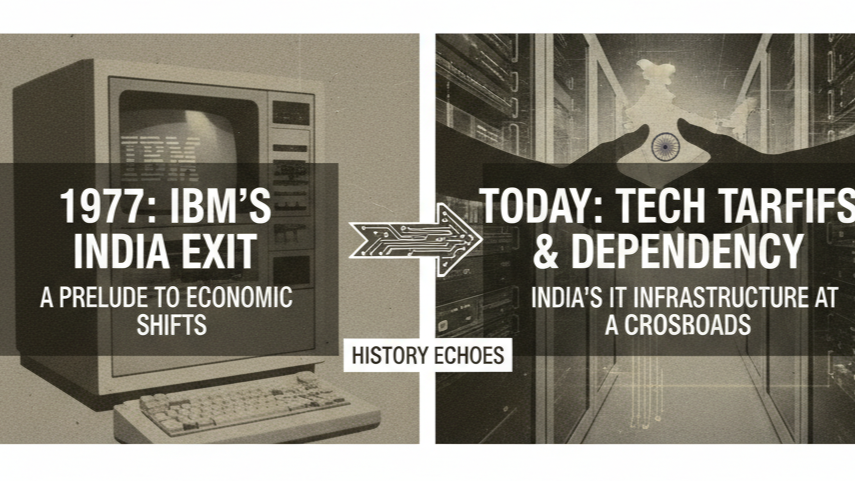In 1977, the world’s most dominant technology company was given a choice: give up control or leave one of the world’s biggest potential markets.
They chose to leave.
This isn’t a modern headline about trade wars. This is the largely forgotten story of IBM in India, and it holds urgent lessons for today’s turbulent global landscape.
The Showdown
In the 1970s, “Big Blue” was the undisputed king of computing, holding a near-monopoly in India. At the same time, India, under a new government, was fiercely forging its path of economic self-reliance. This led to a new law, the Foreign Exchange Regulation Act (FERA), requiring all foreign companies to dilute their ownership to a 40% local stake.
It was a line in the sand. India was telling the world: to do business here, you must invest in our story and build our capabilities.
But IBM had its own non-negotiable principle: it maintained 100% control of its subsidiaries, everywhere in the world. It was a clash between a rigid global doctrine and an immovable national policy.
The Indian government’s stance wasn’t just about abstract principles. It was hardened by three key grievances:
- Obsolete Technology: A major part of IBM’s profitable model was importing used and refurbished mainframe computers into India. The government saw this as treating the nation as a “dumping ground” for second-hand tech while paying first-rate prices.
- Drain of Foreign Exchange: The high rental and maintenance fees for these machines were seen as a massive drain on India’s precious foreign currency reserves, with little tangible investment flowing back into the country.
- No Technology Transfer: IBM’s “black box” approach—leasing and servicing its own machines—created dependency. India wanted to learn how to build and maintain its own systems, but IBM’s model was seen as actively stifling the growth of a domestic tech industry.
Faced with the choice to adapt its global model or exit, IBM packed its bags and left India in 1978.
Lessons for Today’s Tense Trade Environment
Why is this nearly 50-year-old story a critical case study for today, especially as nations like the USA and India engage in tariff disputes?
1. Localization is About Sovereignty, Not Just Sales. The battleground of the 70s was equity. Today, it’s data sovereignty, forced technology transfer, and local content laws. When a country imposes tariffs or non-tariff barriers, it’s often about more than just economics; it’s a declaration of national interest and technological independence. The “one-size-fits-all” global strategy that failed IBM is even more dangerous today.
2. Your Business Model Can Be a Political Statement. IBM’s model of leasing refurbished machines wasn’t just a business practice; it was interpreted as a political act of treating a developing nation as a low-priority market. Today, where a company sources its materials, where it pays its taxes, and where it stores its data are all scrutinized by governments. In an era of tariffs, a supply chain is no longer just a logistical map; it’s a geopolitical one.
3. Principles Have a Price Tag. IBM stuck to its corporate principle and lost a market that would become a global tech powerhouse. India stuck to its national principle, creating a tech vacuum that, while painful initially, spurred the birth of its own domestic IT giants (like CMC Limited and HCL). It’s a powerful reminder to constantly weigh the long-term cost of rigidity versus the benefit of pragmatic adaptation, especially when facing nationalistic policies.
4. Trade Disputes Are a Political Reality. The IBM saga shows that when a powerful corporation clashes with a determined government, the government almost always has the final say within its own borders. Today, as the US imposes tariffs on India and other nations, global companies are caught in the crossfire. The lesson is that you cannot separate business strategy from foreign policy. Geopolitical risk assessment and government relations are no longer optional departments; they are central to survival.
The standoff between IBM and India wasn’t just about a law. It was about the evolving balance of power between a multinational corporation and a sovereign nation. That is a dance playing out on a grander scale than ever before.

